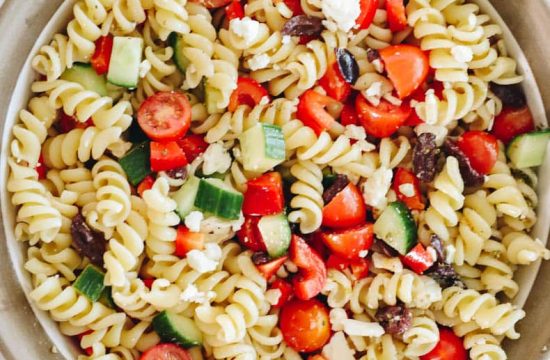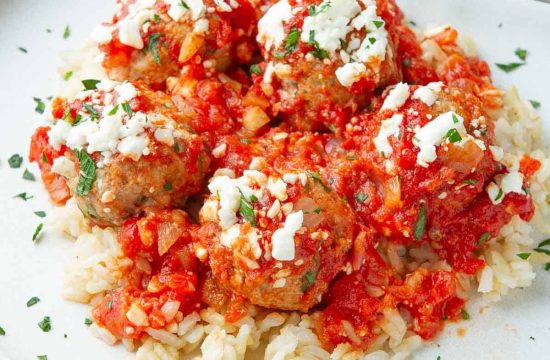The 2nd chapter of Chikitsasthanam of Ashtanga Hridayam is named as Raktapitta chikitsitam Adhyayah. This chapter deals with the explanation of ‘treatment of bleeding diseases’.
The topics covered in this chapter include –
– Sadhyasadhyata – Prognosis
– Chikitsa Krama – procedure of treatment
– Use of Tarpana and Peya in Raktapitta
– Virechana Yoga – purgative recipes to be used in Raktapitta
– Vamana Yoga – Emetic recipes to be used in Raktapitta
– Post-purificatory procedures in Raktapitta
– Use of Mantha and Pancharasa in Raktapitta
– Use of Peya in Raktapitta
– Use of Yavagu and Mamsarasa in Raktapitta
– Useful grains and vegetables in Raktapitta
– Use of processed water, honey water and fruit juices in Raktapitta
– Use of meat in Raktapitta
– Avoidance of causes of Raktapitta
– Vasakalpa
– Anya kalpa – other recipes for raktapitta
– Ksira Prayoga – Recipe of Milk in Raktapitta
– Treatment of bleeding diarrhea and bleeding piles in Raktapitta
– Vasa Ghrita in Raktapitta
– Palasa Ghrita & Trayamana Ghrita in raktapitta
– Kshara Prayoga – use of alkali in raktapitta
– Basti Prayoga – use of enema in Raktapitta
– Nasagata Raktapitta – treatment of bleeding from the nose in raktapitta
Pledge by the author(s)
अथातो रक्तपित्तचिकित्सितं व्याख्यास्याम: व्याख्यास्याम: ।
इति ह स्माहुरात्रेयादयो महर्षय: ।
After having offered prayers to the God, henceforth we are going to explain the chapter pertaining to the explanation of ‘treatment of bleeding fevers’. Thus say (pledge) atreya and other sages.
Sadhyasadhyata: Prognosis
ऊर्ध्वगं बलिनोऽवेगमेकदोषानुगं नवम् ।
रक्तपित्तं सुखे काले साधयेन्निरुपद्रवम् ॥ १ ॥
अधोगं यापयेद्रक्तं यच्च दोषद्वयानुगम् ।
शान्तं शान्तं पुनः कुप्यन्मार्गान्मार्गान्तरं च यत् ॥ २ ॥
अतिप्रवृत्तं मन्दाग्नेस्त्रिदोषं द्विपथं त्यजेत् ।
Raktapitta which is of upward direction (bleeding from the upper parts of the body such as nose, mouth, ears), seen in a strong person, with nil or mild bouts (of bleeding), produced by only one Dosha, of recent onset, appearing at a favorable time and having no complications (secondary affections) should be treated. Raktha which bleeds in downward direction (bleeding from the urethra, rectum, and Vagina), that produced by two Doshas, recurring often after subsiding, and changing from one channel (site) to other, frequently, should be controlled. That which bleeds heavily, found in a person who has poor digestion strength, produced by all the three Doshas and that manifesting in both upward and downward directions should be rejected.
Chikitsa Krama: Procedure of treatment
ज्ञात्वा निदानमयनं मलावनुबलौ बलम् ॥ ३ ॥
देशकालाद्यवस्थां च रक्तपित्ते प्रयोजयेत् ।
लङ्घनं बृंहणं वाऽऽदौ शोधनं शमनं तथा ॥ ४ ॥
Having clearly determined the cause, direction, the mala (chief causative Dosha), anubala (secondary Doshas), the strength of the patient and the disease, habitat of the patient, afflicted organs in the body, duration of the disease, season etc. based on the stage of Rakta Pitta, treatment of raktapitta should be commenced either with Langhana (lightening therapies) and Brimhana (stoutening therapies) or Sodhana (purification therapies) and samana (Palliative therapies).
Chikitsa Krama: Procedure of treatment
सन्तर्पणोत्थं बलिनो बहुदोषस्य साधयेत् ।
ऊर्ध्वभागं विरेकेण वमनेन त्वधोगतम् ॥ ५ ॥
शमनैर्बृंहणैश्चान्यल्लङ्घ्यबृंह्यानवेक्ष्य च ।
Raktapitta which is produced by Santarpana (over nourishment), in a strong person, caused by many Doshas should be treated by Vireka (purgation therapy) if it is of upward direction and by Vamana (emesis therapy) if it is of downward direction or by Samana (Palliative)and Bramhana (stoutening, nourishing therapies), after finding out whether the patient is fit for langhana and brimhana therapies.
Chikitsa Krama: Procedure of treatment
ऊर्ध्वं प्रवृत्ते शमनौ रसौ तिक्तकषायकौ ॥ ६ ॥
उपवासश्च निःशुण्ठीषडङ्गोदकपायिनः ।
अधोगे रक्तपित्ते तु बृंहणो मधुरो रसः ॥ ७ ॥
When it is of upward direction, administration of palliative therapies with herbs having samana (mitigating the Dosha) with bitter and astringent tastes, fasting and drinking sadangodaka, devoid of Zingiber officinale should be adhered to; in case of downward direction, it should be treated with the use of sweet tasting herbs which are nourishing.
Use of Tarpana and Peya in Raktapitta
ऊर्ध्वगे तर्पणं योज्यं प्राक्च पेया त्वधोगते ।
In case of upward direction, tarpana should be given first (as food) and in case of downward direction, peya should be given first.
Use of Tarpana and Peya in Raktapitta
अश्नतो बलिनोऽशुद्धं न धार्यं तद्धि रोगकृत् ॥ ८ ॥
धारयेदन्यथा शीघ्रमग्निवच्छीघ्रकारि तत् ।
If the patient is eating well and if she is strong, the impure blood (that is flowing out) should not be stopped; if done so, it is going to produce disease. If otherwise, (patient not eating well and is weak) it (bleeding) should be stopped soon, as it is going kill the patient, quickly, just like the fire.
Virechana Yoga: Purgative recipes to be used in Raktapitta
त्रिवृच्छ्यामाकषायेण कल्केन च सशर्करम् ॥ ९ ॥
साधयेद्विधिवल्लेहं लिह्यात्पाणितलं ततः ।
त्रिवृता त्रिफला श्यामा पिप्पली शर्करा मधु ॥ १० ॥
मोदकः सन्निपातोर्ध्वरक्तशोफज्वरापहः ।
त्रिवृत् समसिता तद्वत्पिप्पलीपादसंयुता ॥ ११ ॥
A Lehya (confection) should be prepared as per produce with the decoction and paste of trivrt (Operculina turpethum) and syama (variety of Operculina turpethum) mixed with sugar. It should be licked one panitala (karsa) per dose. A modaka (large sized tablet) prepared from Operculina turpethum fruits of Terminalia chebula, Terminalia bellirica and Emblica officinalis variety of Operculina turpethum Piper longum along with sugar and honey cures Raktapitta caused by all the Doshas of the upward direction, dropsy and fever. Similarly the bolus prepared with equal quantities of trivirt (Operculina turpethum) and sita (sugar) and one fourth part of the Pippali (Piper longum).
Vamana Yoga: Emetic recipes to be used in Raktapitta
वमनं फलसंयुक्तं तर्पणं ससितामधु ।
ससितं वा जलं क्षौद्रयुक्तं वा मधुकोदकम् ॥ १२ ॥
क्षीरं वा रसमिक्षोर्वा
Vamana – emesis therapy done with powder of Randia dumetorum, added with sugar and honey should be used. It also acts as Tarpana – provides calming nourishment. Followed by drinking either sugar water, honey water, or water boiled with Glycyrrhiza glabra, milk or sugarcane juice.
Post purificatory procedures in Raktapitta
शुद्धस्यानन्तरो विधिः ।
यथास्वं मन्थपेयादिः प्रयोज्यो रक्षता बलम् ॥ १३ ॥
After purification therapies, the regimen of these therapies, such as drinking peya etc. (liquid foods) should be adhered to, protecting the strength of the patient.
Post purificatory procedures in Raktapitta
मन्थो ज्वरोक्तो द्राक्षादिः पित्तघ्नैर्वा फलैः कृतः ।
Draksadi Mantha mentioned in the treatment of fever (vide, chapter 1/55-58) or that prepared from fruits which mitigate pitta (should be used).
Use of Mantha and Pancharasa in Raktapitta
मधुखर्जूरमृद्वीकापरूषकसिताम्भसा ॥ १४ ॥
मन्थो वा पञ्चसारेण सघृतैर्लाजसक्तुभिः ।
दाडिमामलकाम्लो वा मन्दाग्न्यम्लाभिलाषिणाम् ॥ १५ ॥
Mantha (fruit squash) or Pancasara (sweet syrup) prepared with prepared from honey, Phoenix dactylifera, Vitis vinifera, Grewia asiatica, sugar and water, added with Ghrta (ghee) and Lajasaktu (flour of fried paddy) may be used; for those who have poor digestion and desire sour taste, mantha prepared from Punica granatum, and Emblica officinalis which is sour (is suitable).
Use of Peya in Raktapitta
कमलोत्पलकिञ्जल्कपृश्निपर्णीप्रियङ्गुकाः ।
उशीरं शबरं लोध्रं शृङ्गवेरं कुचन्दनम् ॥ १६ ॥
ह्रीवेरं धातकीपुष्पं बिल्वमध्यं दुरालभा ।
अर्धार्धैर्विहिताः पेया वक्ष्यन्ते पादयौगिकाः ॥ १७ ॥
भूनिम्बसेव्यजलदा मसूराः पृश्निपर्ण्यपि ।
विदारिगन्धा मुद्गाश्च बला सर्पिर्हरेणुकाः ॥ १८ ॥
Herbal drink prepared from herbs in the following three half verses and next quarter-verses should be made use of (in adhogaraktapitta- downward bleeding) viz. filaments of Nelumbo nucifera, Nymphaea stellata, Uraria picta, Callicarpa macrophylla, Ushira (Vetiveria zizanioides), Variety of Santalum album, Symplocos racemosa), Zingiber officinale Pterocarpus santalinus, Pavonia odorata, flowers of Woodfordia fruticose, fruit pulp of Aegle marmelos, Fagonia cretica, Andrographis paniculata, Vetiveria zizanioides, Cyperus rotundus, Lens culinaris and Uraria picta, Pueraria tuberosa Vigna radiata, Sida cordifolia, ghee, Pisum sativum
Use of Yavagu and Mamsarasa in Raktapitta
जाङ्गलानि च मांसानि शीतवीर्याणि साधयेत् ।
पृथक् पृथग्जले तेषां यवागूः कल्पयेद्रसे ॥ १९ ॥
शीताः सशर्कराक्षौद्रास्तद्वन्मांसरसानपि ।
ईषदम्लाननम्लान् वा घृतभृष्टान् सशर्करान् ॥ २० ॥
Meat of animals of desert-like region which are cold in potency should be processed separately in water with herbs mentioned above and from juice (meat soup), Yavagu (gruel) should be prepared. It should be cooled and added with sugar and honey (and used) or meat juice (soup) with slight sour taste or not having sour taste, fried in ghee and added with sugar (may be used).
Useful grains and vegetables in Raktapitta
शूकशिम्बीभवं धान्यं रक्ते शाकं च शस्यते ।
अन्नस्वरूपविज्ञाने यदुक्तं लघुशीतलम् ॥ २१ ॥
Grains with spike, legumes (pulses) and vegetables which are easily digestible and cold (in potency) mentioned in annasvarupaVijnana (chapter of sutrasthana) are best suited for Raktapitta (bleeding disease).
Use of processed water, honey water and fruit juices in Raktapitta
पूर्वोक्तमम्बु पानीयं पञ्चमूलेन वा शृतम् ।
लघुना शृतशीतं वा मध्वम्भो वा फलाम्बु वा ॥ २२ ॥
drink mentioned earlier (sadangapaniya without sunthi), water processed with pancamula (five greater roots), water boiled and cooled and made light, or honey water or syrup of fruits (any one of these) should be used for drinking.
Use of meat in Raktapitta
शशः सवास्तुकः शस्तो विबन्धे तित्तिरिः पुनः ।
उदुम्बरस्य निर्यूहे साधितो मारुतेऽधिके ॥ २३ ॥
प्लक्षस्य बर्हिणस्तद्वन्न्यग्रोधस्य च कुक्कुटः ।
Rabbit meat along with Vastuka (saka) – Chenopodium ambrosioides is beneficial when there is constipation, meat of black partridge boiled with decoction of Ficus racemosa is beneficial when there is predominance of vata. And similarly the meat of peacock boiled in the decoction of Ficus lacor and the poultry meat, boiled in the decoction of Ficus benghalensis.
Avoidance of causes of Raktapitta
यत् किञ्चिद्रक्तपित्तस्य निदानं तच्च वर्जयेत् ॥ २४ ॥
Any causative factor related to – Raktapitta (bleeding disease) should be avoided.
Vasa kalpa
वासारसेन फलिनीमृल्लोध्राञ्जनमाक्षिकम् ।
पित्तासृक् शमयेत्पीतं निर्यासो वाटरूषकात् ॥ २५ ॥
शर्करामधुसंयुक्तः केवलो वा शृतोऽपि वा ।
वृषः सद्यो जयत्यस्रं स ह्यस्य परमौषधम् ॥ २६ ॥
Fresh juice of Adhatoda vasica mixed with powder of Callicarpa macrophylla special type of mud found in Saurashtra Symplocos racemosa, Berberis aristata, and honey alleviates bleeding diseases; or fresh juice of atarusaka (Adhatoda vasica) either mixed with sugar and honey or alone or decoction of Adhatoda vasica cures Raktapitta immediately. Adhatoda vasica is it’s (of Raktapitta) best medicine.
Anya kalpa: Other recipes for raktapitta
पटोलमालतीनिम्बचन्दनद्वयपद्मकम् ।
लोध्रो वृषस्तण्डुलीयः कृष्णा मृन्मदयन्तिका ॥ २७ ॥
शतावरी गोपकन्या काकोल्यौ मधुयष्टिका ।
रक्तपित्तहराः क्वाथास्त्रयः समधुशर्कराः ॥ २८ ॥
The following three decoctions of herbs added with honey and sugar cure bleeding disease,
a. Trichosanthes dioica, Aganosma heynei, Azadirachta indica, Santalum album & Pterocarpus santalinus and Prunus cerasoides
b. Symplocos racemosa, Adhatoda vasica, Amaranthus viridis black mud and Lawsonia inermis
c. Shatavari (Asparagus racemosus), Gopakanya (Hemidesmus indicus), Lilium polyphyllum & Fritillaria roylei and Glycyrrhiza glabra.
Anya kalpa: Other recipes for raktapitta
पलाशवल्कक्वाथो वा सुशीतः शर्करान्वितः ।
लिह्याद्वा मधुसर्पिर्भ्यां गवाश्वशकृतो रसम् ॥ २९ ॥
Decoction of bark of Butea monosperma cooled and added with sugar should be consumed dung water of either cow or horse may be administered along with honey and ghee.
Anya kalpa: Other recipes for raktapitta
सक्षौद्रं ग्रथिते रक्ते लिह्यात् पारावताच्छकृत् ।
If the blood (coming-out) is found clotted, the excreta of pigeon may be licked, mixing with honey.
Anya kalpa: Other recipes for raktapitta
अतिनिःस्रुतरक्तश्च क्षौद्रेण रुधिरं पिबेत् ॥ ३० ॥
जाङ्गलं भक्षयेद्वाजमामं पित्तयुतं यकृत् ।
If there is excessive bleeding, then blood of animals of desert like regions should be administered mixed with honey or the uncooked liver along with the bile of a goat may be eaten.
Anya kalpa: Other recipes for raktapitta
चन्दनोशीरजलदलाजमुद्गकणायवैः ॥ ३१ ॥
बलाजले पर्युषितैः कषायो रक्तपित्तहा ।
Powder of Santalum album, Vetiveria zizanioides, Cyperus rotundus, puffed / parched rice, Vigna radiata, Piper longum and Hordeum vulgare soaked in the decoction of bala (Sida cordifolia) (kept overnight) decoction is prepared cures bleeding disease.
Anya kalpa: Other recipes for raktapitta
प्रसादश्चन्दनाम्भोजसेव्यमृद्भृष्टलोष्टजः ॥ ३२ ॥
सुशीतः ससिताक्षौद्रः शोणितातिप्रवृत्तिजित् ।
Essence (supernatant fluid of a solution) of chandana (Santalum album), ambhoja (Nelumbium speciosum), sevya (Vetiveria zizaniodes), earthen or clay lump made red after cooking in fire, cooled and mixed with sugar and honey controls profuse bleeding.
Anya kalpa: Other recipes for raktapitta
आपोथ्य वा नवे कुम्भे प्लावयेदिक्षुगण्डिकाः ॥ ३३ ॥
स्थितं तद्गुप्तमाकाशे रात्रिं प्रातः स्रुतं जलम् ।
मधुमद्विकचाम्भोजकृतोत्तंसं च तद्गुणम् ॥ ३४ ॥
Pieces of Saccharum officinarum are crushed a little and put into water kept in a new pot, that pot containing crushed sugarcane is kept protected from insects, flies etc., in the open air for a night. Next morning, it is filtered, liquid is collected, mixed with honey, made fragrant with the well bloomed flower of Nelumbo nucifear and consumed; it acts like wise (stops heavy bleeding).
Anya kalpa: Other recipes for raktapitta
ये च पित्तज्वरे चोक्ताः कषायास्तांश्च योजयेत् ।
Those decoctions described in the treatment of Pittajvara – may also be used (in this disease).
Kshira Prayoga: Recipe of Milk in raktapitta
कषायैर्विविधैरेभिर्दीप्तेऽग्नौ विजिते कफे ॥ ३५ ॥
रक्तपित्तं न चेच्छाम्येत्तत्र वातोल्बणे पयः ।
युञ्ज्याच्छागं शृतं तद्वद्गव्यं पञ्चगुणेऽम्भसि ॥ ३६ ॥
पञ्चमूलेन लघुना शृतं वा ससितामधु ।
जीवकर्षभकद्राक्षाबलागोक्षुरनागरैः ॥ ३७ ॥
पृथक् पृथक् शृतं क्षीरं सघृतं सितयाऽथवा ।
With the help of different decoctions, when the digestive power is increased and kapha is controlled / diminished but Vata is increased and bleeding is not mitigated, then goat milk should be boiled with five times of water (and reduced to its original quantity) should be consumed. Similarly, cow milk boiled with the herbs of laghu panccamula (roots of Desmodium gangeticum, Uraria picta, Tribulus terrestris, Solanum indicum and Solanum xanthocarpum) and mixed with Sugar and honey or milk boiled with Jivaka (Microstylis wallichii), (Rishabhaka) Malaxis acuminata, Vitis vinifera, Sida cordifolia, Tribulus terrestris and Zingiber officinale each one boiled with ghee or sugar may be consumed.
Kshira Prayoga: Recipe of Milk in raktapitta
गोकण्टकाभीरुशृतं पर्णिनीभिस्तथा पयः ॥ ३८ ॥
हन्त्याशु रक्तं सरुजं विशेषान् मूत्रमार्गगम् ।
विण्मार्गगे विशेषेण हितं मोचरसेन तु ॥ ३९ ॥
वटप्ररोहैर्शुङ्गैर्वा शुण्ठ्युदीच्योत्पलैरपि ।
Milk boiled with Pedalium murex / Tribulus terrestris, and of Asparagus racemosus boiled with four Parnis (Desmodium gangeticum, Uraria picta, Vigna trilobata and Teramnus labialis), quickly relives the bleeding associated with Pain, especially bleeding through urinary passage. Milk boiled with mocarasa (Salmalia malabarica) is especially beneficial in bleeding from the rectum; or milk boiled with shoots and tender leaves of Vata (Ficus benghalensis) or that boiled with sunthi (Zingiber officinale), Pavonia odorata and Nymphaea stellate.
Treatment of bleeding diarrhea and bleeding piles in raktapitta
रक्तातीसारदुर्नामचिकित्सां चात्र कल्पयेत् ॥ ४० ॥
The treatment prescribed for severe bleeding diarrhea may also be adopted in these diseases.
Kshira Prayoga: Recipe of Milk in raktapitta
पीत्वा कषायान् पयसा भुञ्जीत पयसैव च ।
कषाययोगैरेभिर्वा विपक्वं पाययेद्घृतम् ॥ ४१ ॥
After drinking decoction mixed with milk, the patient should eat his food with milk only. He should drink ghee cooked with the herbs mentioned for preparing decoctions.
Vrisha Ghrita: Vasa Ghrita in raktapitta
समूलमस्तकं क्षुण्णं वृषमष्टगुणेऽम्भसि ।
पक्त्वाष्टांशावशेषेण घृतं तेन विपाचयेत् ॥ ४२ ॥
तत्पुष्पगर्भं तच्छीतं सक्षौद्रं पित्तशोणितम् ।
पित्तगुल्मज्वरश्वासकासहृद्रोगकामलाः ॥ ४३
तिमिरभ्रमवीसर्पस्वरसादांश्च नाशयेत् ।
The Adhatoda vasica Plant with its roots and head (leaves) pounded is boiled in eight parts of water and decoction reduced to one-eight-part, medicated ghee is prepared from it using its own flowers as paste. After cooling, it is consumed mixed with honey. This cures bleeding disease, abdominal tumor caused by Pitta, fever, dyspnoea, cough, heart disease, jaundice, blindness, giddiness, visarpa (herpes) and Svarasada (feeble voice).
Palasa Ghrita & Trayamana Ghrita in raktapitta
पलाशवृन्तस्वरसे तद्गर्भं च घृतं पचेत् ॥ ४४ ॥
सक्षौद्रं तच्च रक्तघ्नं तथैव त्रायमाणया ।
Herbal ghee is cooled with the fresh juice of Stalks of Palasa (Butea monosperma) and paste of the same, consumed with honey it cures bleeding disease; similarly so it that prepared from trayamana (Gentiana kurroo).
Kshara Prayoga: Use of alkali in raktapitta
रक्ते सपिच्छे सकफे ग्रथिते कण्ठमार्गगे ॥ ४५ ॥
लिह्यान्माक्षिकसर्पिर्भ्यां क्षारमुत्पलनालजम् ।
पृथक् पृथक् तथाऽम्भोजरेणुश्यामामधूकजम् ॥ ४६ ॥
In case of bleeding from the throat, the blood being sticky, mixed with Kapha or solidified. Then the Ksara (alkali) prepared from the stalks of Nymphaea stellata, filaments of Nelumbo nucifera Callicarpa macrophylla or flowers of Madhuka longifolia each separately should be licked mixed with honey and ghee.
Basti Prayoga: Use of enema in raktapitta
गुदागमे विशेषेण शोणिते बस्तिरिष्यते ।
If the bleeding is from the rectum, enema therapy is especially suitable.
Nasagata Raktapitta: Treatment of nasal bleeding
घ्राणगे रुधिरे शुद्धे नावनं चानुषेचयेत् ॥ ४७ ॥
कषाययोगान् पूर्वोक्तान् क्षीरेक्ष्वादिरसाप्लुतान् ।
क्षीरादीन् ससितांस्तोयं केवलं वा जलं हितं ॥ ४८ ॥
रसो दाडिमपुष्पाणामाम्रास्थ्नः शाद्वलस्य वा ।
In case of fresh bleeding from the nose then the Nasal drops with the herbs mentioned for decoctions earlier, prepared either with milk or juice of Saccharum officinarum etc. may be put into the nose. Or milk etc. mixed with sugar or cold water alone or cold water is beneficial; so also the juice of flowers of Dadima (Punica granatum), seed kernel of Mangifera indica or juice of Cynodon dactylon.
Nasagata Raktapitta: Treatment of bleeding from the nose in raktapitta
कल्पयेच्छीतवर्गं च प्रदेहाभ्यञ्जनादिषु ॥ ४९ ॥
The herbs belonging to cold potency should be made use for application over the body, oil massage, bath etc.,
Nasagata Raktapitta: Treatment of bleeding from the nose in raktapitta
यच्च पित्तज्वरे प्रोक्तं बहिरन्तश्च भेषजम् ।
रक्तपित्ते हितं तच्च क्षतक्षीणे हितं च यत् ॥ ५० ॥
The external and internal medicines described in the treatment of Pittajvara (fever of pitta origin) are beneficial in bleeding diseases also; similarly also those prescribed in Ksataksina (consumption due to injury to chest).
इति श्री वैद्यपति सिंहगुप्तसूनु श्रीमद्वाग्भटविरचितायामष्टाङ्गहृदयसंहितायां चतुर्थे चिकित्सितस्थाने रक्तपित्तचिकित्सितं नाम द्वितीयोऽध्याय: ॥ २॥
Thus ends the chapter Raktapitta Cikistha- the second in Cikitsitasthana of Astanga hrdaya samhita composed by Srimad Vaghbhata, son of sri Vaidyapati Simhagupta.















